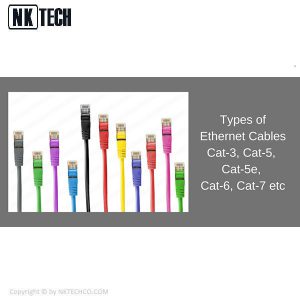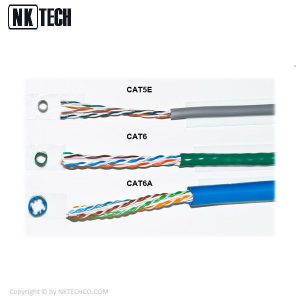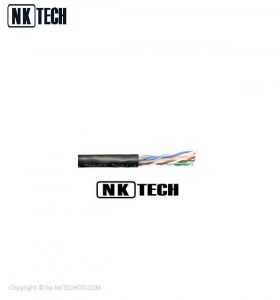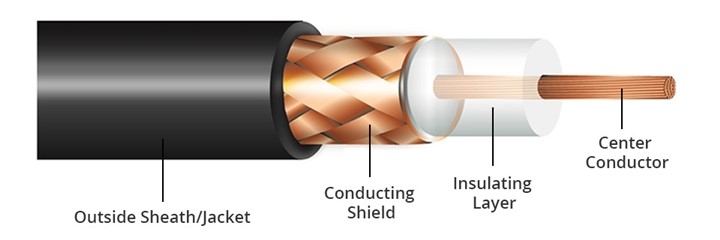Megabits, Cats, and cables get a bit confusing when you are looking at Ethernet cables. Figuring out which cabling works for you without going overboard is hard, but we’re here to help.
We’ve defined these terms and put together tables comparing the benefits and issues with different Ethernet cables. We’ll explain what shields do and why you may — or may not — need them. So, start here when figuring out how to choose the best Ethernet cable for your home or work.
While wireless gear is popular, the backbone of any network should be connected via an Ethernet cables. They offer higher and more consistent throughput, with less interference, which makes them the best option for gaming, too. These days, the choices comes down to a handful of different types: Cat5, Cat6, and Cat7, with some variations. (Cat is short for “category” and generally denotes the speed the cable is able to carry.) If you’re rocking one of the best gaming routers, you need the cabling to match.
How to choose an Ethernet cable
For years, if you asked any geek which was the best cable, the response was often Cat5 (although they were mostly referring to the subsequent variant Cat5e. More on that later). Numbering the different categories all started when copper telephone cable was then repurposed to carry both voice communication data. These older cables were unshielded in a twisted pair configuration, designated as Cat1. They have a data rate that maxed out at a pokey 1 Mbps, although nobody would use this for a data connection for decades after. (Good ol’ ’90s dial-up.)
So what are the differences between the modern categories, and which one should you use for your home network?

Cat5
While there were some standards in between, the next standard was Cat5. This was a common Ethernet standard, although it is quite outdated at this point. It is notable as the throughput speeds were a nice, round 100 Mbps, at distances up to 100 meters. Nobody should try to run a network on Cat5 these days, nor are the cables even available for purchase.
Cat5e
The subsequent standard is Cat5e, and the “e” stands for “Enhanced.” The more modern Cat5e cable is produced to a higher standard, and is designed to reduce “crosstalk,” which is the phenomenon of unwanted transfer of signals in the wire that reduces throughput. Cat5e can have speeds of 1000 Mbps, and is used in many residential and commercial wired applications for Gigabit Ethernet. This is the slowest cable that anyone should use for a new Ethernet setup, and its primary advantage currently is its lower cost.
There is also a plan to increase the speeds of Cat5e to 5 Gbps over the existing cables, known as the IEEE P802.3bz standard, which also works on Cat6 cabling.
If you’ve got to have it, here’s the Amazon Basics Cat5e cable for around $7.
Cat6
next standard up is Cat6, which are wound more tightly with a nylon spline and shielding to further reduce crosstalk and reduce interference. While the obvious advantage of Cat6 cabling is that the throughput bumps up to a ridiculous 10 Gbps, but the detail is that these speeds are limited to 55 meter distances, which is shorter than for Cat5 or Cat5e runs, and at longer distances goes back to 1 Gbps.
While the speeds are faster for Cat6 on shorter runs, the downside is that the wires are stiffer making them more difficult to bend, and the thicker wires are more difficult to terminate. Cat6 has also traditionally been more expensive, although the price difference compared to Cat5e has lessened over time.
Here’s the Amazon Basics Cat6 cable for just under $5.
Cat6a
Cat6a is, for the most part, not that much different from Cat6, but there are some differences worth noting. The cost is about 20-35% higher than Cat6, but the maximum cable length is 100 meters across all systems and conditions for Gigabit Ethernet; it’s theoretical top speed is 10 Gbps over 100 meters (330 feet) of cable. The transmission bandwidth is also doubled, from 250 to 500 MHz, and Cat6a cables are often shielded, which makes them ideal for industrial use.
Cat7 and beyond
The latest “cable on the block” is Cat7, which is shielded, and requires a GigaGate45 connection. The speeds are wickedly fast, at shorter distances, maxing out at 100 Gbps at less than 15 meter distances, and reverting to 10 Gbps at longer distances. There is also a Cat8 standard that is still being finalized, but no gear is currently available, with a targeted throughput of 40 Gbps at longer distances. These “next generation” cable choices of Cat7 and above are more suited to data centers, than residential applications.
Want some Cat7 cable? The Amazon Basics version will only cost you $7 for 3ft.
Decision time
But which cable is the best to use? Just like there is no best computer or best router for everyone, it comes down to a few variables.
کابل شبکه ایرانی
From a cost perspective, Cat5e is the most affordable, Cat6 costs only a little more (and consider that the labor is often the more major expense), and each generation beyond costs considerably more. Cat5e is the most flexible around turns and corners, and therefore the most “hassle free” for the DIY installer, with Cat6 being thicker, and so on going up. Finally, with faster speeds likely coming to Cat5e, there is plenty of life in this older standard.
Advertisement
This needs to be balanced against the goal to “future proof” the network. The wiring is a project to install, and the labor costs, when done by professionals, usually exceed the materials cost. But it’s tempting to spend a little more in the hope that the network will outlast the peripherals. For those that want to take this route, Cat6 or Cat6a are good options.
Also, with virtually all consumer gear, such as routers, motherboards and Ethernet cards, max out at 1000 megabits or 1 Gbps. So for the time being, and likely years to come, the typical user will not be able to take advantage of the 10 Gbps and faster speeds of the Cat6a and higher cables.
کابل شبکه ایرانی
What is Optical Fibre?
Fiber or fibre optic technology is an effective cabled-based communication system. It is reliable, versatile, and widely used in many applications and industries.
Optical fibre cabling is used to transfer information via pulses of light, which pass along one or more transparent plastic or glass pipes. In some cases, this can be more than several hundred pipes. Each of these strands is little wider than an average hair, and is normally surrounded by a further layer of cladding which is also in plastic or glass but constructed at a different density to the main inner strand.
A sheath made up of several layers of insulated casing is also wrapped around the cladded fibres. This usually comprises of a protective wrapper, known as a buffer tube, followed by a final outer jacket designed to protect the entire multi-stranded cable.
کابل شبکه ایرانی
Optical Fibre Cable Uses
Optic cables are commonly found in a variety of applications such as the internet and broadband, phonelines, networking, and telecommunications. Additional fibre optic cable uses in the home and workplace include lighting and interior decor.
Optical fibre cable can save space compared to bulkier traditional cabling. This ability has also made it popular for many safety and lighting features in vehicles. Optical fibre technologies are widely used in many other demanding professional fields too, including in medical applications, for detailed mechanical inspections, and as sensors for monitoring and controlling the flow of various sorts of electrical currents, sounds and chemicals.
Optical Fibre Internet and Networking
Fibre optic internet cable is increasingly popular. This is due to the higher speeds and bandwidth it can provide compared to standard ethernet or Wi-Fi signals delivered via coaxial or even copper wire from street-level exchanges. This means that fibre networking is a far better choice where high speeds are advantageous or for particularly intensive data transfer needs. Much of this is also true for fibre optic phone lines.
کابل شبکه ایرانی
Fibre optic bandwidth is usually significantly higher than a typical ethernet connection. Fibre is also safe to use in high-voltage locations, and in areas where flammable gases or other harsh chemicals or weather conditions are likely to be a factor. This can be another important factor in choosing fibre optic cables for broadband delivery and telecoms as opposed to standard ethernet.






